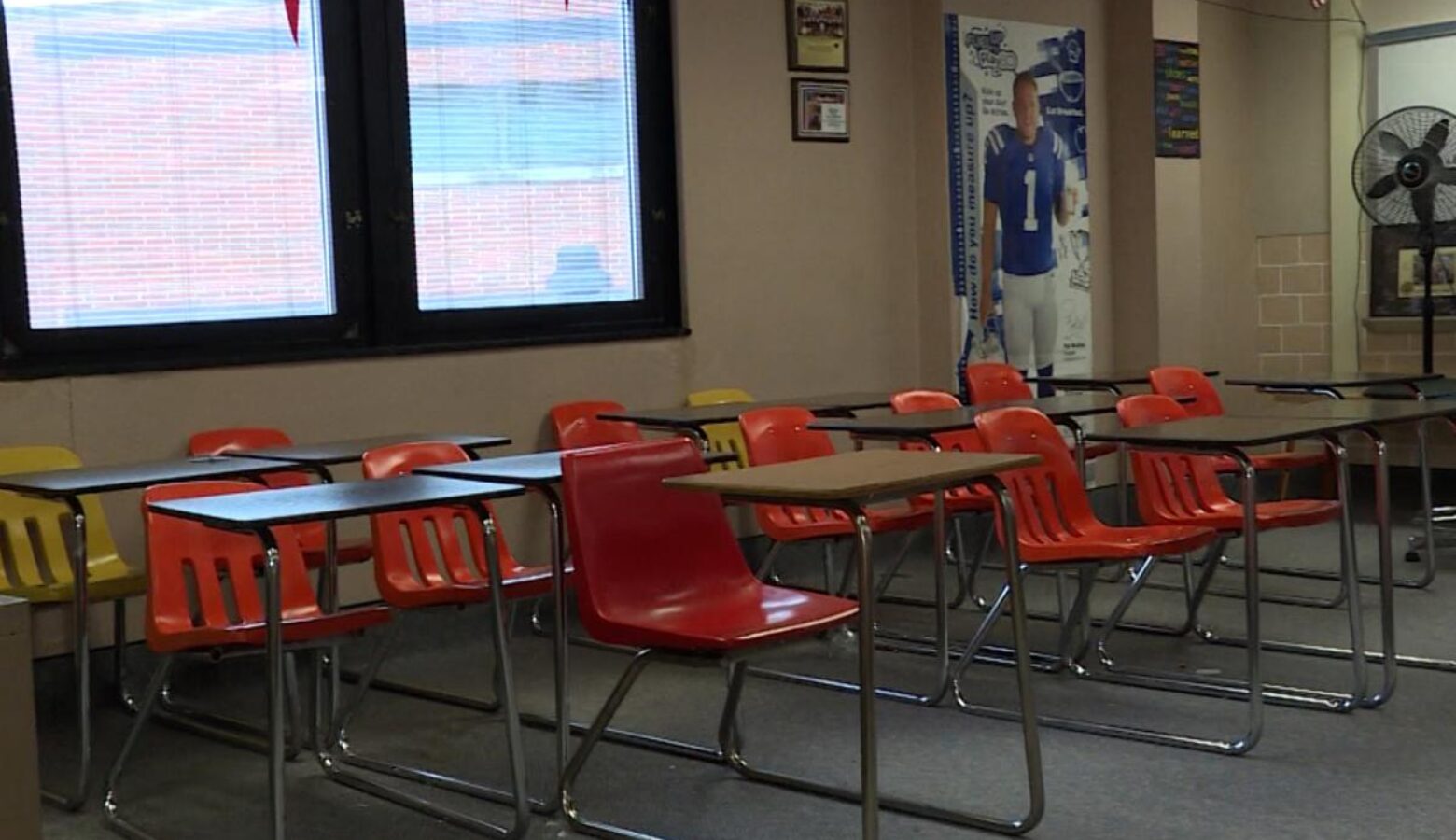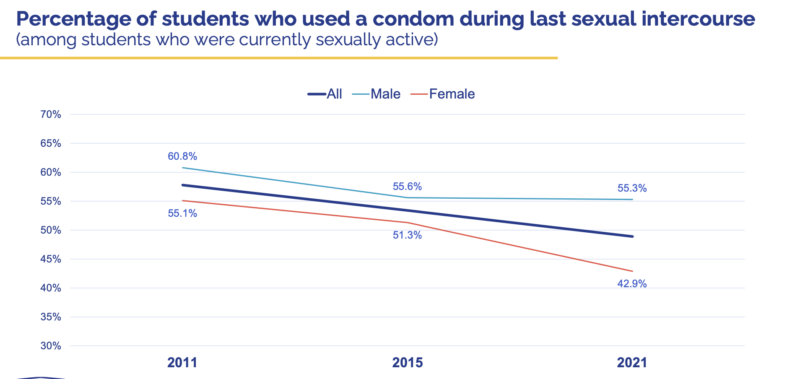Indiana schools opt for outside help with sex education

It’s Olivia Cosgray’s fourth day with a seventh-grade class at Northview Middle School teaching sex education.
The school brings her in through the nonprofit LifeSmart Youth to provide instruction.
Indiana is one of 18 states that doesn’t require schools to teach sex education to students. If a school does teach sex education, the state mandates teaching about HIV and AIDS, and emphasis on abstinence.
With limited time and guidance, some districts turn to outside groups, like LifeSmart Youth, to help tackle the subject.
Today is set aside to teach about STIs and STDs.
It’s Cosgray’s fifth year coming to Northview. And with the future of abortion access up in the air, she’s more convinced than ever students need comprehensive sex education.
“It makes you want to work harder, and push harder and try and make people realize like how important this is,” Cosgray said.
Class opened with a word scramble, then a worksheet asking kids to match STIs and STDs with their characteristics.
The class watched a video about HIV and AIDS, and she answered questions that run the gambit of “can I get HIV from sitting on a toilet seat?” to “how to know when to go get tested?”
“Sometimes you get really wacky questions,” Cosgray said. “But even those questions are really important because if it’s in their brain, it’s something they’re wondering about, so they need a factual answer to it.”
LifeSmart Youth sends teachers to 9 counties across the state. The curriculum is abstinence based, but they cover topics like puberty with 4th to 6th graders, moving into STD and STI prevention and healthy relationships with older students.
Indiana has the 14th highest teen birthrate in the country in the country.
STDs and STIs are on the rise, including in Indiana. But the state’s Youth Risk Behavior Survey reports condom use is declining among youth people.
Tammie Carter, the CEO of LifeSmart Youth, said more than 31 percent of Indiana high schoolers report being sexually active by the time they graduate.
Though that number is lower that is was ten years ago, because STD and STI rates are on the rise, Carter said it means teens are more frequently turning to altneratives, like oral sex.
“So we can talk about abstinence,” Carter said. “But if the train has already left the station it’s a little bit late. And we have to be very vigilant about teaching young people how to protect themselves.”
Her organization is not the only resource schools seek to provide students with information.
MCCSC partners with IU Health for sex education curriculum. They start education on puberty with fifth graders and progress in topics though middle school and 10th grade health class.
Becky Rose, the MCCSC director of student services, said the partnership helps teachers access more in-depth information, and they put an emphasis on healthy communication through each step of the curriculum.
“We know that healthy relationships and communication are extremely valuable skills for our children as they move through their life,” she said. “And sexual health is really about communication and healthy relationships. It’s about keeping your body safe, keeping your body healthy.
It’s tough to fit lessons in in while keeping up with other classroom instruction. But she said kids need information year-to year to respond to changing needs.
“We know there’s a lot out there right now that kids can stumble upon, that may not be the best accurate information or the healthiest information,” Rose said. “And so it’s really been just extremely successful and helpful that we have IU Health as a partner to be able to help provide that accurate information.”
The number of Indiana teachers who report teaching health consequences of early pregnancy, STDs, and STIs has gone down, though the CDC says most Indiana secondary schools teach some sex education.
Cosgray had about 45 minutes to get through teaching about 6 STIs and STDs. On her final day, she talks with the class about healthy relationships. One 7th grader asked her what to if one person wants to wear a condom during sex and the other does not.
Cosgray said she asked the student if that was a conversation they thought was likely to occur, and what should happen if people couldn’t come to an agreement.
“And I’m like… What do you think they should do?” And she’s like, ‘probably not have sex.’ I’m like, ‘yeah, probably not have sex.’ So it’s kind of taking things that we’ve talked about and then learning how to have conversations around it and put it into action.”
LifeSmart Youth is evaluating ways to expand its programming to more schools.
A 2018 Indiana law requires schools send a form home so parents can opt their student out of sex education if they want.


